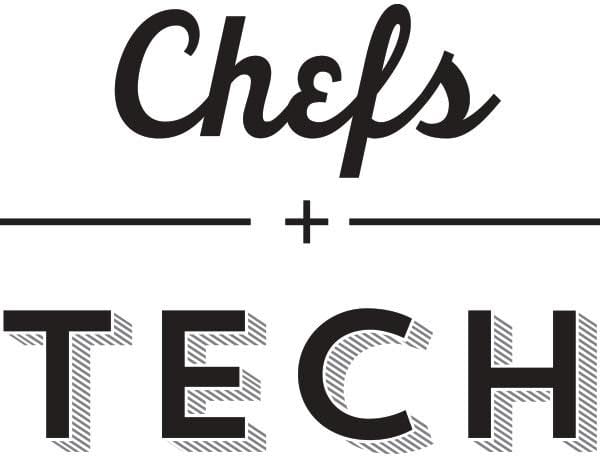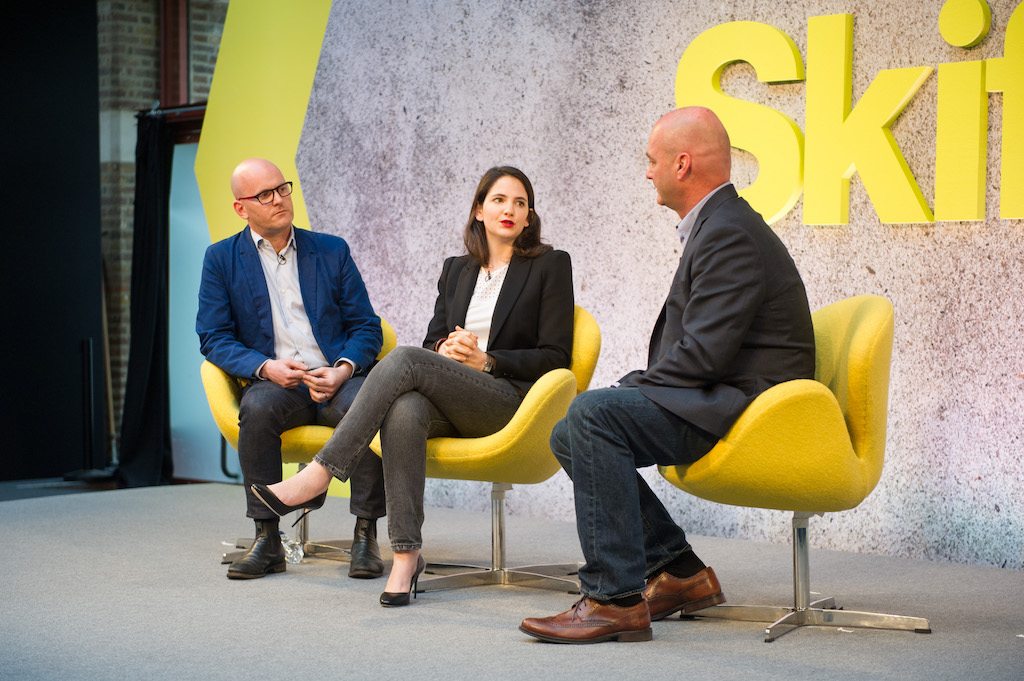Skift Take
Tourists plan entire vacations around food. It's up to restaurants and food tourism companies to leverage this trend for their best interests.
 Editor’s Note: In September we announced that Skift was expanding into food and drink with the addition of the Chefs+Tech weekly newsletter.
Editor’s Note: In September we announced that Skift was expanding into food and drink with the addition of the Chefs+Tech weekly newsletter.
We see this as a natural expansion of the Skift umbrella, bringing the big picture view on the future of dining out, being fanatically focused on the guest experience, and at the intersection of marketing and tech.
You can find the archives here, read the latest issue below, and subscribe here:
SUBSCRIBE TO RECEIVE WEEKLY UPDATES
Will Travel for Food
The travel industry took center stage in London last week at Skift Forum Europe, but one discussion spanned the travel-restaurant-hospitality space. Ben Liebmann, COO of Copenhagen’s Noma, and Camille Rumani, co-founder and COO of VizEat, spoke about the way food is changing how people travel. Said Liebmann, on Noma’s Mexico pop-up restaurant, set to open on April 12: “Tulum is such a small town; we’ll see a large number of guests using it as a reason to come to Mexico.”
“Food is sometimes the excuse for the journey, of the whole experience,” added Rumani.
And it’s true — destination restaurants (like Noma in Copenhagen, Osteria Francescana in Italy, Hiša Franko in Slovenia, and plenty more) generate tourism for the surrounding areas as people book trips just to eat at these perhaps once-in-a-lifetime places. Tourists travel looking for authentic experiences and connections with the surrounding community — which is where Rumani’s VizEat shines; tourists book “food experiences” — meals, cooking classes, private parties — wherever their travels take them. Food and travel are intrinsically connected; Chefs+Tech looks forward to continuing to explore this connection. (P.S. To that end: keep an eye on the speaker list for Skift Global Forum in New York, September 26-27).
Successes and Challenges of Building a Human Business
In the Bay Area, Chef Daniel Patterson is revered as the brain behind stellar restaurants like Coi, Aster, and Alta. On a national level, he’s better known as a driving force behind Loco’l, a reimagined fast-food restaurant hoping to change Americans’ perception of fast food. A profile of Patterson in California Sunday describes what brought him to start Loco’l, its challenges, its struggles, and, most interestingly, all that is involved in building not only a new hospitality business, but a new hospitality model. The piece is long, but makes interesting observations on the unique human challenges Patterson and his team faced as they opened their first restaurant in Watts, Los Angeles. The challenge: building a business that’s intertwined with the neighborhood and welcoming to those who live there, but at the same time, building a business that can survive as a business.
It’s a humbling story that illustrates that, unfortunately, even with the best type of motivation, opening a new restaurant concept — especially one as radically different as Loco’l — is a challenge in today’s heavily racial, political, wealth-divided climate. Still, Patterson’s message and goal shines through: bringing a healthy, affordable option to communities where it’s most needed. What’s most interesting, though, is how the concept and business of Loco’l has evolved during its short lifespan. While the restaurant concept remains the same, the method of building the concept has changed dramatically, and he and his team have been building Loco’l under a blinding spotlight of attention (most recently that hyped 0-star New York Times review). The piece is worth a read for Patterson’s candid dialogue and an honest look at the realities of opening a sustainable restaurant under the glare and scrutiny of an opinionated public.
Creating a Viral Restaurant
How does a restaurant go viral? Luck, location, and good lighting certainly play into the scenario, but unique and instantly recognizable touches that photograph well and share easily certainly don’t hurt. Grubstreet profiles designer Laureen Moyal, founder of Paperwhite Studio, credited with several of the most recent viral-restaurant successes in New York (sugar packets at Jack’s Wife Freda, placemats at by CHLOE), discussing how this sort of branding can turn a restaurant into more than a destination… it’s a lifestyle. Her first viral success came after designing a menu-placemat at Jack’s Wife Freda, which served as the perfect background for overhead Instagram shots, as the network gained popularity.
And, as it turns out, the perfect-for-restaurants Instagram helps those who run the restaurants, too. “When we’re looking at Instagram, we’ll notice if the egg yolks aren’t balanced correctly, or the sauce isn’t right. We can tell what’s missing from the shots. It’s amazing to be able to see that without being present at every single table,” Jack’s Wife Freda’s owner told Grubstreet. This sort of instantly recognizable branding not only builds a restaurant’s digital following, but entices others to come to the restaurant. It becomes a destination for locals and tourists. Instagram is, quite literally, the most written-about topic on C+T (archive here) and for good reason: it has revolutionized restaurant marketing, PR, design, and discoverability.
The Devil’s in the Details… and on the Speakers
Food, design, lighting, tables, waitstaff, menus… music. A nearly infinite number of details go into the success or failure of a restaurant. And the right music, as it turns out, can make people stay put through dessert. A huge study by Soundtrack Your Brand, a startup backed by Spotify, studied the impact of background music in restaurants. According to the study, as profiled in Quartz, “Researchers found that music they deemed thoughtful and “on-brand” can drive up sales—especially dessert sales, as customers linger longer—but music that’s too mainstream can actively hurt sales. Restaurants would actually be better off not playing music than playing a random scroll of top hits, it turns out.”
And Again: Meal Kit Delivery Is Tough Business
In today’s “meal kits are hard” news, Munchery has made some major operational changes in an effort to “stay afloat” according to a Bloomberg report. The company is attempting to raise a reported $15 million to save its business, which at one point was burning $5 million per month. The company has also cut its workforce as a new CEO aims to right the ship.
DIGESTIFS:
- Food & Wine names its Best New Chefs of 2017 — Food & Wine
- It’s here! This list of the World’s 50 Best Restaurants were just announced in Melbourne (and a U.S. restaurant took the top spot.) — World’s 50 Best
- Big changes to McDonald’s U.S. marketing and digital teams — WSJ
- The “secret force” behind one of New York’s most iconic restaurants is… women. — Forbes
- Buy a ticket for the show, but stay for the pie… the food is the real show at Sweeney Todd on Broadway — Eater
SUBSCRIBE NOW
The Daily Newsletter
Our daily coverage of the global travel industry. Written by editors and analysts from across Skift’s brands.
Have a confidential tip for Skift? Get in touch
Tags: food and drink, food tourism, skift table
Photo credit: COO of Noma Ben Liebmann (L), Co-Founder & COO of VizEat Camille Rumani (center), and Skift's Greg Oates (R) speaking at Skift Forum Europe in London on April 4, 2017. Russell Harper / Skift
